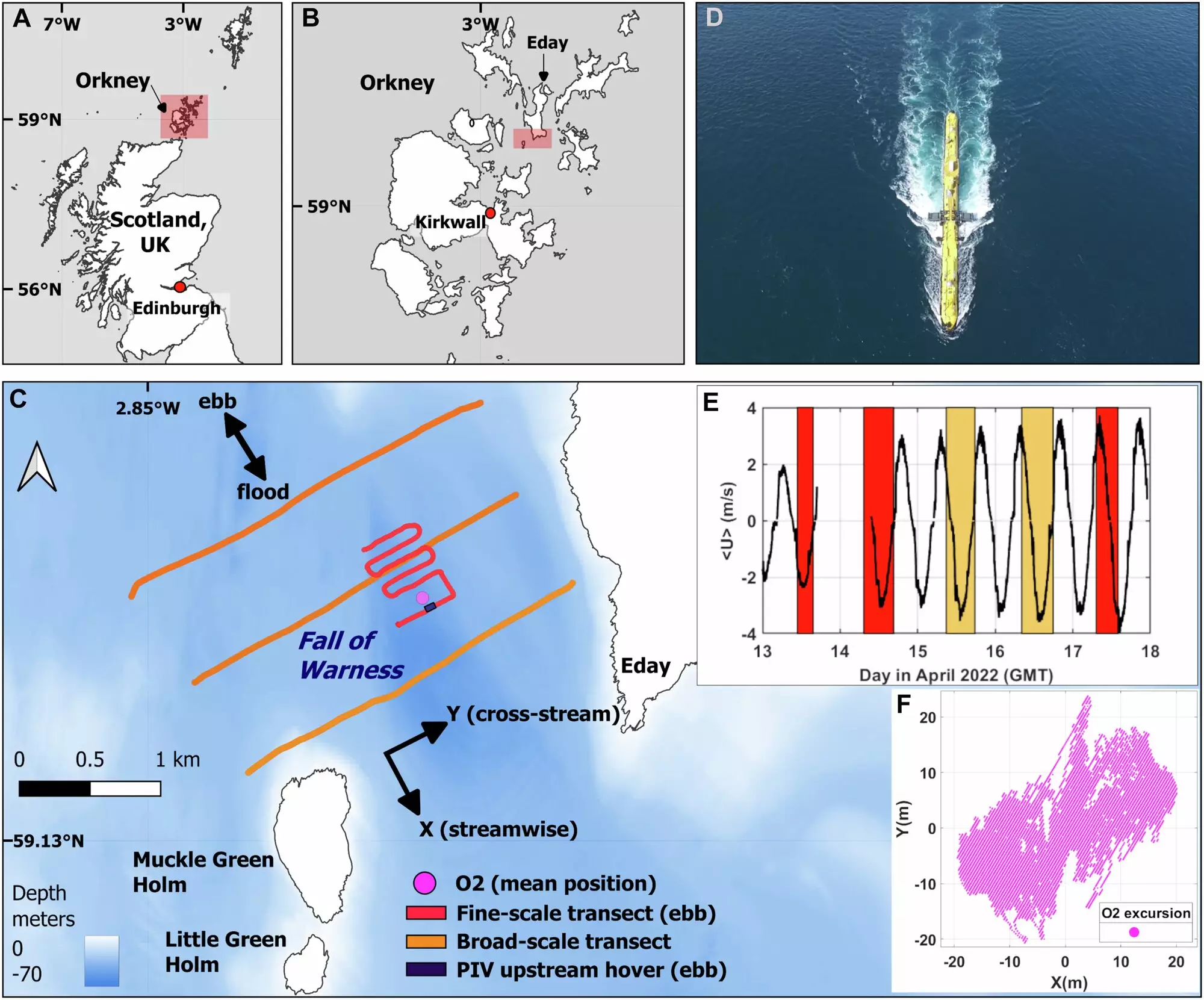The rise of renewable energy installations along the UK coastline marks a significant shift towards sustainable energy solutions. Among these, tidal energy stands out for its reliability and predictability. Unlike wind and solar power, tidal flows are contingent on gravitational forces, leading to a consistent energy supply, independent of weather fluctuations. However, as offshore renewable energy infrastructure expands, particularly with innovative technologies like the world’s most powerful tidal turbine, the Orbital Marine Power’s O2, there are numerous environmental and operational challenges that need to be addressed.
To effectively understand the complex dynamics of tidal currents, research teams have begun to employ cutting-edge technologies. A recent study utilized drone technology in tandem with traditional boat-based surveys to meticulously map tidal flows around the O2 turbine in the Orkney Islands, Scotland. This two-pronged approach enabled researchers to gather comprehensive data on how high-velocity currents, sometimes exceeding 8 knots, impact turbine performance and their downstream effects, which could, in turn, influence the placement of future turbines and local marine habitats.
Dr. Lilian Lieber, a senior research fellow involved in this study, emphasizes the exhilarating yet challenging nature of conducting surveys in such tumultuous waters. The insights garnered from these dynamic environments hold essential implications for improving the design and placement of tidal turbines, ultimately enhancing their efficiency and minimizing ecological disruptions.
Understanding the Ecological Impact
As offshore renewable infrastructure proliferates, it is critical to gauge how such technologies interact with marine ecosystems. The study referenced noted that while the wake generated by the O2 turbine was found to create favorable foraging conditions for seabirds, dense arrays of turbines might interfere with the movement of various marine species. Notably, the survey revealed orcas navigating close to the turbine, underscoring the need for meticulous site assessments to balance energy production with environmental preservation.
The challenge lies in achieving a harmonious relationship between energy generation and ecological integrity. Research indicates that while certain species benefit from turbine installations, like seabirds taking advantage of the turbine’s wake, others may be negatively impacted. This duality presents a significant hurdle for researchers, as they seek to promote the growth of tidal energy while safeguarding the biodiversity of fragile marine habitats.
Tidal energy represents a promising facet of the UK’s clean energy aspirations. Researchers predict that tidal stream energy technologies could fulfill up to 11% of the country’s electricity requirements, given the right infrastructure and investment. The O2 turbine, expected to power around 2,000 homes annually, exemplifies how harnessing tides can contribute substantially to the national energy grid. However, the realization of this potential is contingent on overcoming a series of operational challenges, such as the costs associated with scaling up technology and ensuring effective grid connectivity.
The latest research underscores the necessity of advancing field measurement techniques to explore dynamic tidal conditions more thoroughly. Addressing the unpredictable nature of tidal flows adds urgency to the need for site-specific assessments, allowing for a better understanding of how turbine installations will interact with their surroundings.
As the tidal energy sector becomes increasingly vital, collaboration between scientists, engineers, and policymakers is essential. Shaun Fraser from UHI Shetland points out that combining scientific expertise with emerging technologies is crucial for making tangible advancements in the field. The momentum surrounding marine renewable energy developments in the Highlands and Islands signifies not just an investment in energy but also an opportunity for local communities and industries to engage in sustainable practices.
Despite the promise of tidal energy, the obstacles in scaling up technology and ensuring long-term operational reliability require ongoing innovation. The study indicates that success in these endeavors will depend heavily on a nuanced understanding of the natural conditions surrounding tidal installations, which cannot be entirely replicated in laboratory environments or computer simulations. A cost-effective evaluation strategy that incorporates real-world environmental data will be pivotal in harnessing the benefits of the tidal energy revolution.
The journey towards a significant increase in tidal power installations along the UK coastline is fraught with challenges, yet it remains a beacon of hope for achieving sustainable energy independence. As research evolves and technologies improve, the potential for tidal energy to become a cornerstone of the UK’s energy landscape is more achievable than ever. By addressing environmental impacts and operational hurdles through innovative research methodologies, we can navigate this exciting frontier in renewable energy and secure a cleaner, more sustainable future for generations to come.



Leave a Reply